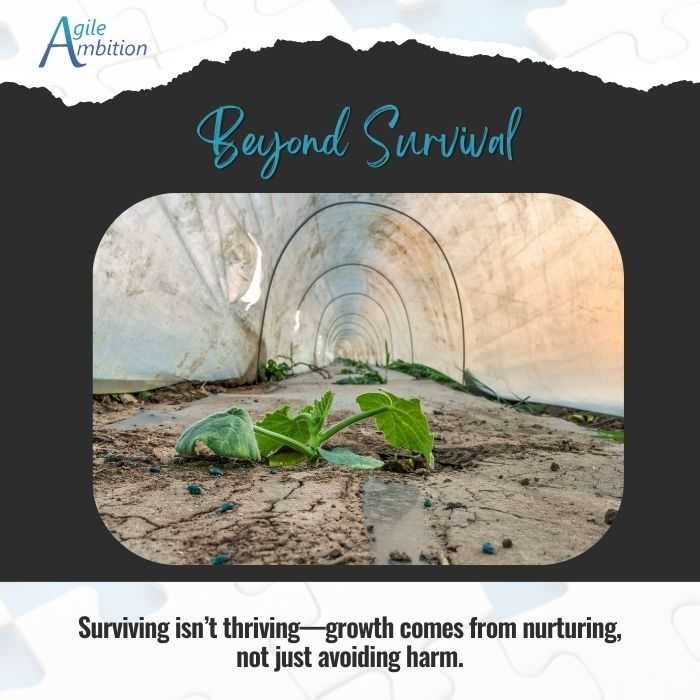Are Scrum Masters Useless: A Cautionary Tale

Scrum masters are as useless as electricians. You need them when they know what they’re doing. They’ll burn your house down if they don’t.
The Hidden Dangers of Incompetence
When our HVAC failed, we did the usual: called friends, watched YouTube, and tried to figure out what kind of professional to call. Eventually, we realized we needed an electrician.
After extensive searching, my husband finally found a service that sent out an electrician. He found a burned-out fuse but didn’t have a suitable replacement, so he hard-wired the connection.
If that sounds dangerous, it was. I questioned it, but the electrician assured me the fuse was unnecessary. Not being an expert, I took his word since the HVAC was running…

A few weeks later, the HVAC failed again, and we couldn’t reach the first electrician. Upon contacting the original service, they sent out a different electrician.
When the new electrician arrived, he took one look and informed us that the wires had caught fire, melted apart, and singed some of the nearby insulation. It’s a miracle the entire house didn’t go up in flames. He even mentioned that it was so dangerous he was hesitant to touch it. Thankfully, he managed to fix the problem, and now, nearly 10 years later, the HVAC is still running, and the house isn’t a pile of ash—so I can only conclude that the second guy knew what he was doing.
What Value Does a Scrum Master Provide?
The Scrum Master’s value lies in enhancing the team’s effectiveness, but this is more complex than it sounds.
I’ve written before about how we’ve done a disservice to the Scrum Master accountability by simplifying it as a single statement: “The Scrum Master is accountable for the Scrum Team’s effectiveness.”
While the Scrum Guide explains that the Scrum Master serves the team, Product Owner, and organization in many ways, we often underestimate the scope of these responsibilities. People picture the Scrum Master as a shepherd with three sheep: the Product Owner, the team, and the organization—just keeping them in line. But the reality is messier.

A Scrum Master is more like a ninja in a wasp’s nest, constantly dealing with overlapping challenges—from conflicts and process inefficiencies to continuous improvement and team morale. Each task involves its own complexities, requiring them to juggle multiple issues at once.
When effective, a Scrum Master helps the team remove obstacles to delivering value—obstacles the team likely doesn’t possess the time or skills to handle. While the Product Owner maximizes product value and the Scrum Team delivers increments each Sprint, the Scrum Master ensures impediments don’t derail these efforts. Acting as a force multiplier, they allow the Product Owner and team to focus on their primary roles without getting sidetracked.
What Happens if a Scrum Master Isn’t Effective?
When a Scrum Master is ineffective, teams struggle with persistent impediments, unknowingly adopt anti-patterns, and neglect continuous improvement, favoring immediate tasks instead. These issues can severely impact value delivery and resilience, leading to stagnation.
An ineffective Scrum Master can cause the team to plateau in skills and throughput, focusing solely on immediate tasks without someone dedicated to removing systemic impediments. Alternatively, a team member may take on these duties part-time, limiting impact, or full-time, diverting them from development work and reducing overall capacity.
Without a dedicated and effective Scrum Master, teams risk spinning their wheels or overloading individuals with tasks outside their expertise, which doesn’t optimize performance or morale.
Why Do Some People Think Scrum Masters Are Unnecessary?
Many people see Scrum Masters as unnecessary because they’ve only worked with those who were ineffective. However, a competent Scrum Master serves as a catalyst for the team’s success, removing obstacles, driving organizational change, and fostering a culture of continuous improvement and collaboration.
If you’d asked me whether electricians were useless after learning that ours nearly burned down our house, I would’ve said yes. But knowing that the second electrician may have saved our lives, I’d say it depends.
Negative experiences often weigh heavier on our perceptions than positive ones, a phenomenon known as “negativity bias.”
For example, despite loving the color green, my heartmate avoids all green foods because his past experiences were terrible. This kind of sweeping generalization happens with Scrum Masters, too.

Developers might sneer at the idea of a Scrum Master as a force multiplier because they haven’t worked with a good one or feel confident in their abilities without external guidance. However, an effective Scrum Master is more than just a facilitator; they’re a catalyst for improvement, helping developers perform at their best by tackling impediments that affect team flow.
Why Do Scrum Masters Fail?
Scrum Masters often fail due to inadequate training or misunderstanding of their role, which is frequently oversimplified. It’s a leadership position that relies on influence, not authority. You can’t learn effective leadership in a two-day course.
The role demands more than process knowledge; it requires interpersonal finesse, problem-solving, and follow-through. Without these skills, Scrum Masters struggle to support their teams effectively.
Earlier versions of the Scrum Guide compared Scrum Masters to servant leaders, but the 2020 update reframed them as:
“Scrum Masters are true leaders who serve the Scrum Team and the larger organization.”
- Scrum Guide
While service is important, the emphasis on leadership is crucial.
Leadership isn’t for everyone; it requires self-improvement and navigating complex dynamics—traits not everyone has or wants to develop.
In “The 360-Degree Leader,” John C. Maxwell describes a type of leader that focuses on building strong relationships, managing themselves effectively, and consistently seeking to improve and support those around them. According to Maxwell, leadership is less about a title or position and more about creating a positive impact regardless of one’s rank within the hierarchy.

In my career, I can count on one hand the number of true leaders I’ve encountered, and I suspect your experience is similar. Good leadership is rare, and with so many Scrum teams needing strong leaders, it’s no wonder many Scrum Masters struggle.
Mike Rowe of Dirty Jobs often highlights the growing skills gap in the U.S. workforce, particularly in the trades, where the push for college education has undervalued essential skills like carpentry and electrical work.
Just as we find ourselves scraping the bottom of the barrel for competent electricians who understand the importance of a fuse, we face a similar shortage of capable leaders. The demand for leadership far exceeds the supply, leaving many Scrum Masters to default to simply facilitating meetings rather than genuinely leading.
It’s about more than just knowing Scrum; it requires genuine leadership skills that can’t be acquired overnight or through a quick certification.
How Can I Tell if My Scrum Master Is Adding Value?
A valuable Scrum Master removes impediments, fosters clear communication, and drives continuous improvement. They should be a catalyst for positive change, not just a facilitator. Look for tangible improvements in team dynamics, processes, and delivery.
As with electricians, judging a Scrum Master’s work isn’t always straightforward. You could seek a second opinion, but that doesn’t guarantee clarity. It’s on the Scrum Master to show their value, but that’s easier said than done.
Ultimately, they need to do two things:
- Establish Scrum as defined in the Scrum Guide.
- Improve the team’s effectiveness.
To determine if they’ve established Scrum as outlined in the Scrum Guide, start by thoroughly reading it yourself. Identify areas where your team deviates from the defined framework and assess whether justifiable reasons exist for these deviations. Creating or using a Scrum checklist can help you systematically review which elements are in place and which are missing.
Here are practical ways for Scrum Masters to demonstrate value:
- Highlight Impediment Removal: Showcase impediments you’ve removed and their impact.
- Facilitate Effective Retrospectives: Track completed action items from retrospectives.
- Promote Successful Suggestions: Note suggestions you’ve made that the team implemented successfully.
- Provide Air Cover: Explain how you shielded the team from disruptions.
- Reduce Inefficiencies: Identify inefficiencies you’ve reduced.
- Encourage Experiments: Highlight experiments you’ve encouraged.
- Address Dysfunctions: Report progress against a dysfunction map.
These strategies provide clear evidence of their contributions and align their efforts with the broader goals of continuous improvement and team empowerment, reinforcing the value provided by the Scrum Master.
If you’re genuinely unsure whether your Scrum Master is adding value, the best approach is to ask them directly, but do so with a mindset of curiosity rather than criticism. This approach opens up a constructive dialogue that can clarify their contributions and highlight areas for potential improvement.
Just as an electrician who doesn’t start a fire isn’t necessarily good, a Scrum Master who avoids failures isn’t necessarily adding value. A good Scrum Master goes beyond preventing problems; they actively improve performance and drive continuous improvement.

Why Distinguish Between Accountability and Role?
It’s important to view Scrum Master as an accountability instead of a role because thinking of it as a role implies it’s tied to a specific job title or individual. Seeing it as an accountability emphasizes that this responsibility can be taken on by anyone, regardless of their official position.
The original Scrum Masters were also Developers. The Scrum Guide allows this flexibility, implying the Scrum Master role isn’t strictly separate from development, nor does it state that a Scrum Master can’t also be a developer.
“If the Product Owner or Scrum Master are actively working on items in the Sprint Backlog, they participate as Developers.”
- Scrum Guide
Recognizing that the Scrum Master might not be an explicit role raises questions about whether the Scrum Master is a full-time job. You can make anything take 40 hours, but that doesn’t mean it’s the best use of resources. The key is ensuring that however we allocate the mantle of Scrum Master, we’re not diluting its impact.
If you find a truly exceptional Scrum Master—someone who excels in leadership and servant leadership without seeking higher titles—dedicate them full-time. However, if your Scrum Master is mediocre, it might be more effective to rotate the accountability among developers.
Can a team function without a Scrum Master?
Without a Scrum Master, a team can still function, but it may lack the structured support for removing obstacles, facilitating collaboration, and maintaining focus on agile practices. This lack of support often results in reduced efficiency and slower progress. Is it worth the trade-off?
Tasks typically managed by the Scrum Master either go undone or are picked up unevenly by team members without the right skills, leading to inefficiencies.
A Scrum Master ensures the team has the support and guidance needed to thrive. Without them, the team risks stagnation and losing momentum, impacting overall performance and outcomes.
TLDR
I don’t believe the Scrum Master accountability is useless, but I have met some who are. Just as I wouldn’t say, electricians are useless, even if one nearly burned down my house.
Works Consulted
- Can a Manager Be THE Scrum Master?
- The Myth of the “Useless” Scrum Master: Unpacking Misunderstandings
- 5 Tips to Showcase Your Value as a Scrum Master
- Top 7 Responsibilities of a Scrum Master
- What Is One Accountability of a Scrum Master
- The ‘Scrum Master’ Job title needs to die
- Why is the news always so depressing?
- The 360 Degree Leader: Developing Your Influence from Anywhere in the Organization
- Scrum Guide
Share
Table Of Contents
Fuel an Idea
Every week, I break down complex ideas, strip away the fluff, and give you experiments to turn knowledge into skills.
If that’s worth a coffee, consider fueling the next big insight.
No pressure. No guilt trips. Just impact.
Buy Me a CoffeeRelated Posts
Quick Links
Legal Stuff

